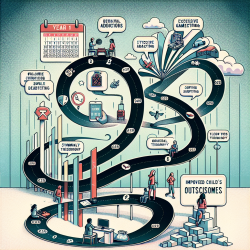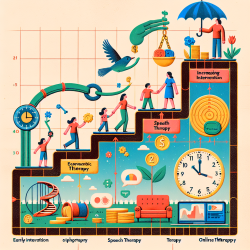Introduction
The study of behavioral addictions is an evolving field that seeks to understand the complexities of non-substance-related addictive behaviors. The research article "Natural course of behavioral addictions: a 5-year longitudinal study" provides valuable insights into the prevalence, persistence, and help-seeking behaviors associated with various behavioral addictions. As practitioners in the field of speech language pathology, it is crucial to leverage such empirical data to enhance therapeutic interventions and outcomes for children and adolescents.
Key Findings from the Study
The study followed a cohort of 4,121 adults over five years to explore the trajectories of six excessive behaviors: exercising, sexual behavior, shopping, online chatting, video gaming, and eating. Here are some key findings:
- Prevalence and Transience: Most participants reported problematic involvement in only one behavior and during a single time period. This suggests that these behaviors are often transient rather than chronic.
- Symptom Severity: There was a significant decrease in symptom severity over time for all behaviors, indicating a natural decline in addictive behaviors without intervention.
- Help-Seeking Behavior: Help-seeking was notably low for behaviors such as sexual behavior, shopping, online chatting, and video gaming, but more prevalent for excessive eating and exercising.
Implications for Practitioners
Understanding the natural course of behavioral addictions can inform practitioners in several ways:
- Tailored Interventions: Recognizing that many behavioral addictions are transient can help practitioners focus on short-term interventions that capitalize on this natural decline.
- Encouraging Help-Seeking: Given the low rates of help-seeking, practitioners should proactively encourage individuals, especially children and adolescents, to seek support for managing excessive behaviors.
- Focus on Comorbidities: The study found substance use comorbidities in some cases, highlighting the need for comprehensive assessments that consider co-occurring disorders.
Encouraging Further Research
The findings underscore the importance of further longitudinal research to explore the episodic nature of behavioral addictions and their spontaneous recovery patterns. Practitioners should advocate for and participate in research efforts that aim to deepen our understanding of these behaviors and improve intervention strategies.
Conclusion
The study provides a foundation for understanding the natural course of behavioral addictions, offering insights that can enhance therapeutic practices. By integrating these findings into their work, practitioners can better support children and adolescents in overcoming excessive behaviors and achieving positive outcomes.
To read the original research paper, please follow this link: Natural course of behavioral addictions: a 5-year longitudinal study.










